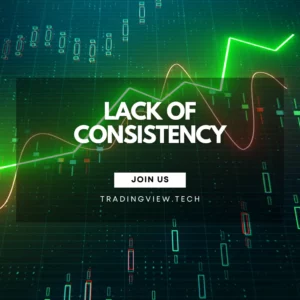Backtesting is a critical process in the world of trading that involves applying a trading strategy to historical market data to assess its viability before risking real capital. It allows traders to simulate how a strategy would have performed in the past, offering a window into its potential future performance. Rather than relying on gut feeling or theoretical assumptions, backtesting grounds a strategy in data, helping traders make more informed decisions.
The fundamental role of backtesting is to validate whether a trading idea has merit. By examining how a strategy behaves across different time periods and market conditions, traders can identify strengths, weaknesses, and areas for improvement. A well-executed backtest can reveal crucial information such as the average return, maximum drawdown, win rate, risk-reward ratio, and consistency of a strategy. It also provides insights into how a system might behave under volatility, news events, or during bull and bear markets.
To conduct effective backtesting, traders typically use platforms like MetaTrader, TradingView, NinjaTrader, or specialized software such as Amibroker and QuantConnect. These platforms allow users to import historical price data and simulate trades based on their strategy’s rules. Some advanced traders even code custom algorithms in Python or R to automate the process and run large batches of tests. Quality data is essential — tick-level or minute-level data provides more accuracy than daily data, especially for intraday strategies.
In essence, backtesting is not just a technical step in strategy development — it is a foundational process that separates professional traders from amateurs. It fosters discipline, reduces emotional bias, and builds confidence in a trading plan before it is ever deployed in the live market.
The Risks of Skipping Backtesting
Skipping backtesting is one of the most common and costly mistakes that new or overconfident traders make. Diving into live markets without thoroughly evaluating a strategy’s past performance is akin to flying blind — it opens the door to unnecessary risk, unpredictable losses, and often, a complete breakdown in trading discipline.
One major risk of skipping backtesting is encountering unexpected drawdowns. Without prior testing, traders have no baseline expectation for how much a strategy might lose during a rough patch. This can lead to emotional decision-making, where traders abandon potentially profitable strategies simply because they weren’t mentally prepared for temporary losses. Worse still, they may double down on failing positions or change strategy midstream, compounding their losses.
Another pitfall is poor risk-reward ratios. A strategy might look appealing on paper or sound promising in theory, but without backtesting, there’s no way to know whether the average gains outweigh the average losses. Many traders have learned the hard way that even a strategy with a high win rate can be unprofitable if the losses are too large when they do occur.
Additionally, traders who skip backtesting are more likely to rely on emotions and impulsive judgments. Lacking data-driven confidence, they may second-guess their trades, overreact to short-term outcomes, or chase trends that don’t align with their strategy. This often leads to overtrading and inconsistent results — the very behaviors successful traders seek to avoid.
Perhaps most importantly, skipping backtesting means missing out on valuable feedback. Backtesting helps traders refine and improve their strategies, correct flawed assumptions, and avoid repeating mistakes. Without it, traders are left in the dark, operating on hope rather than evidence.
Benefits of Backtesting a Strategy
Backtesting offers a wide array of benefits that are indispensable to traders seeking long-term consistency and profitability. Far beyond being a simple testing tool, backtesting is a decision-making compass — it helps traders measure, refine, and gain confidence in their trading strategies before any real money is put on the line.
One of the most powerful benefits of backtesting is its ability to reveal how a strategy performs over time. By analyzing trades across various market environments — bullish trends, bearish drops, sideways movements, and periods of high or low volatility — traders gain a realistic view of how their system behaves in different conditions. This insight is critical, as it ensures that the strategy isn’t just effective in one specific market phase but can adapt or be modified to work in diverse scenarios.
Backtesting also helps detect flaws that may not be obvious during strategy development. For example, a trader may assume that entering a trade on every breakout leads to consistent profits, only to discover through backtesting that this approach results in frequent whipsaws and drawdowns. These early red flags allow traders to revisit and refine their rules — whether it’s adding filters, adjusting stop-loss placement, or changing entry/exit timing.
Furthermore, backtesting allows for parameter optimization. Traders can tweak variables such as moving average periods, RSI thresholds, or stop-loss sizes to identify combinations that maximize returns while minimizing risk. While optimization should be approached with caution to avoid overfitting, it is a powerful method for tailoring a strategy to specific goals and risk tolerance.
Another major benefit is psychological. When a trader has backtested a strategy across years of historical data, they develop confidence in its logic and resilience. This trust becomes vital when the strategy experiences inevitable losing streaks — the trader is more likely to stay the course, knowing from data that the system has succeeded over the long run. This confidence can be the difference between abandoning a good system too soon and sticking with it until the edge plays out.
Finally, backtesting contributes to better risk management. By analyzing performance metrics such as maximum drawdown, average loss per trade, and exposure duration, traders can set realistic expectations and position sizes that align with their capital and risk profile.
In essence, backtesting turns assumptions into evidence. It equips traders with the knowledge and clarity needed to trade decisively, intelligently, and consistently.
How to Conduct Effective Backtesting
Effective backtesting is not just about hitting a “run test” button and looking at results. It requires a structured and thoughtful process to ensure that the data collected is accurate, relevant, and useful. When done correctly, backtesting becomes the foundation upon which a trader builds a durable and resilient trading strategy.
Step 1: Define Clear Trading Rules
Before beginning, the strategy must be defined in exact, unambiguous terms. This includes entry and exit signals, position sizing, stop-loss and take-profit levels, and any filters or conditions that influence trade decisions. Vague or subjective rules will lead to inconsistent results during the backtest.
Step 2: Choose the Right Historical Data
The quality and relevance of historical data are crucial. Traders should choose data that matches the timeframe and instrument they intend to trade — whether it’s tick-level data for scalping strategies or daily data for swing trading. It’s also essential to test across different market conditions (e.g., bull markets, crashes, consolidations) to get a comprehensive view of the strategy’s behavior.
Step 3: Simulate Trades Accurately
Using software platforms such as MetaTrader, TradingView, NinjaTrader, or Python-based tools like Backtrader, traders can input their strategy rules and simulate trades over historical data. Attention should be paid to factors such as slippage, commissions, and realistic execution assumptions, especially for high-frequency strategies.
Step 4: Record Trade Outcomes
Each simulated trade should be logged with key details: entry and exit points, profit or loss, holding period, and the context of the trade (e.g., trend conditions, volatility). This record-keeping not only aids analysis but also helps in identifying recurring patterns or errors in the strategy.
Step 5: Analyze Key Metrics
A thorough analysis should follow the test. Traders should review:
- Win rate (percentage of profitable trades)
- Profit factor (total profit vs. total loss)
- Risk-reward ratio (average win vs. average loss)
- Maximum drawdown (worst peak-to-trough decline)
- Sharpe ratio (return vs. volatility)
- Expectancy (average return per trade)
These metrics help traders judge the effectiveness and stability of the strategy. A strategy with a high win rate but a poor risk-reward ratio may still be unprofitable. Likewise, a system with stellar returns but massive drawdowns may be psychologically or financially unsustainable.
Step 6: Make Adjustments and Re-Test
Based on the findings, traders can fine-tune the strategy parameters or add filters to reduce risk and improve performance. However, it’s important not to “curve-fit” the strategy to the past, which can lead to over-optimization. The goal is robustness — a strategy that performs reasonably well across various conditions, not just perfectly in one specific dataset.
Bonus Step: Forward Testing or Paper Trading
After backtesting, the next step is often forward testing, where the strategy is run in real-time on a demo account. This tests how the system performs with live data and execution variables and offers another layer of confirmation before risking real capital.
In conclusion, effective backtesting is an ongoing, iterative process — a cycle of testing, analyzing, refining, and validating. When treated with the seriousness it deserves, it becomes a trader’s most valuable tool for building and maintaining an edge in the market.
Limitations and Misconceptions
While backtesting is a powerful tool in a trader’s arsenal, it’s not without its limitations. Relying on backtesting alone — especially when done improperly or interpreted with bias — can lead to costly mistakes. Traders must be aware of these pitfalls to avoid developing a false sense of security or building strategies that perform well only on paper.
One of the most common dangers is overfitting — the process of tweaking a strategy so much that it perfectly matches historical data, but fails miserably in live markets. An overfitted strategy is often too complex, relying on specific conditions or rare patterns that may never occur again. It may produce stunning backtest results — high returns, minimal drawdowns, excellent win rates — but the moment it’s exposed to new, real-time data, its performance crumbles. This is because the strategy was essentially “trained” to succeed in one very specific scenario, not to handle the natural randomness and uncertainty of future price movements.
Another misconception is that a great backtest equates to a profitable future. While backtesting can help filter out bad ideas, it does not guarantee that a strategy will work going forward. Market conditions are constantly evolving — influenced by news, geopolitical events, technological changes, and shifts in market sentiment. A strategy that worked well in a trending bull market may fail in a choppy or highly volatile environment. Traders must account for this uncertainty by using diversified testing conditions and maintaining realistic expectations.
Data quality and assumptions are also critical. Many beginner traders make the mistake of using low-quality or incomplete historical data, which can distort results. Others neglect to include real-world trading costs like slippage, spread, and commissions, making the strategy look far more profitable than it would be in practice. Additionally, assuming perfect trade execution — entering and exiting at the exact price points without delays — can skew performance results.
There’s also the issue of confirmation bias. Traders may unconsciously look for results that support their ideas, while ignoring data that contradicts them. This can lead to cherry-picking timeframes or data sets that make the strategy appear successful, when in reality, it lacks broad-based strength.
Ultimately, backtesting is a simulation — a model of what might have happened under certain conditions. It’s a guide, not a crystal ball. To use it effectively, traders must combine it with forward testing, sound risk management, and an ongoing commitment to evaluate and adapt strategies as markets change.
Conclusion & Best Practices
Backtesting is more than just a technical exercise — it’s a critical mindset. It represents a disciplined, data-driven approach to trading that prioritizes preparation over guesswork, strategy over impulse, and analysis over emotion. Traders who make backtesting a core part of their routine are better equipped to navigate the markets with clarity, confidence, and consistency.
As highlighted throughout this guide, backtesting allows traders to:
- Validate trading ideas before risking real money.
- Understand how strategies perform across different market conditions.
- Detect weaknesses and optimize system parameters.
- Manage risk through accurate performance metrics.
- Build emotional resilience by setting realistic expectations.
But to truly benefit, traders must backtest with honesty and objectivity. This means using clean, quality data; factoring in real-world trading costs; avoiding overfitting; and testing across various conditions, not just ideal ones. Traders should aim for robustness — strategies that perform reasonably well in many situations — rather than perfection in a few.
Here are a few best practices to keep in mind:
- Document everything: Keep detailed records of your backtests — parameters used, results, observations — to track what works and what doesn’t.
- Always forward test: After backtesting, use demo accounts or paper trading to test strategies in live conditions before going real.
- Review and refine: Markets evolve. Revisit your strategies regularly and test new ideas to stay adaptive.
- Think long-term: Focus on consistency over time, not just short bursts of profitability.
- Stay skeptical: Question your assumptions, look for weaknesses in your own logic, and don’t fall in love with any one system.
In conclusion, backtesting should be treated as an essential part of every trader’s toolkit — not just during strategy development, but as an ongoing practice. It is the bridge between theory and practice, between ideas and execution. When approached with rigor and realism, it becomes one of the most powerful tools for building sustainable success in trading.



